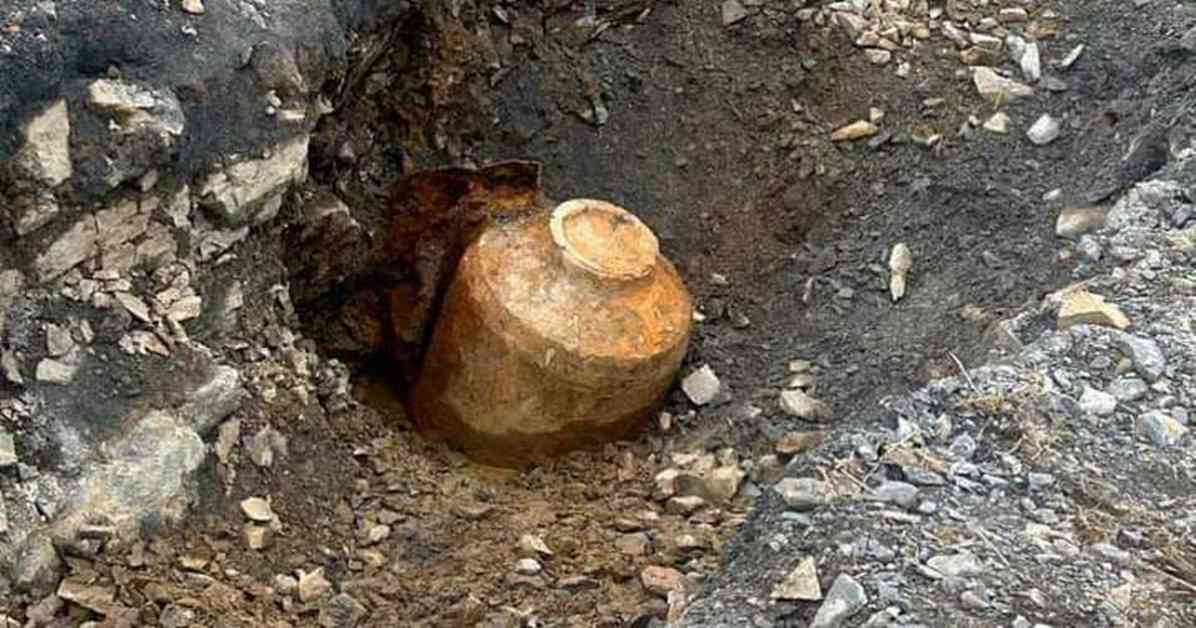During ongoing building work at the Rivenwood estate in Newtownards, a suspected World War Two bomb was unearthed, triggering the evacuation of more than 400 homes in the area. The bomb, believed to be a remnant of a Luftwaffe bombing raid in 1941, has raised concerns due to its size and potential danger. The discovery has brought back memories of the devastating Belfast Blitz that occurred on April 15, 1941, when Newtownards and Bangor were also targeted.
The Ards Airfield, which served as the headquarters of 231 Squadron during World War Two, was hit during the bombing raid, resulting in the loss of thirteen soldiers from the 70th Battalion Royal Inniskilling Fusiliers. The historical significance of the area adds a layer of complexity to the current situation, as authorities work to safely remove the bomb without causing harm to the surrounding community.
The operation to deal with the suspected bomb is being led by the Police Service of Northern Ireland (PSNI) and army ordnance experts. Diggers and hundreds of tons of sand have been deployed to the area to aid in the removal process. The PSNI has warned that the operation could take days to complete, as the authorities carefully assess the best course of action to neutralize the bomb.
Similar operations have been carried out in the past, such as the one in Exeter in February, where a 1,000kg WWII bomb was discovered. In that case, over 2,600 properties were evacuated, and a controlled explosion was conducted to safely dispose of the bomb. The process involved the transportation of over 400 tonnes of sand to suppress the blast and minimize damage to the surrounding area.
In Newtownards, affected residents have been directed to an emergency support center at the Ards Blair Meayne Leisure Complex. Superintendent Johnston McDowell, the North Down and Ards District Commander, expressed gratitude for the residents’ patience and understanding during the evacuation process. He emphasized the importance of prioritizing public safety and assured residents that every precaution is being taken to minimize disruption and ensure their well-being.
As the operation continues, motorists are advised to avoid the area, and a police cordon remains in place to secure the site. The clearance operation is anticipated to last for several days as experts work diligently to safely remove the suspected bomb. Superintendent McDowell reiterated the commitment to keeping residents and the local community safe, emphasizing that no risks will be taken in the disposal process.
The discovery of the suspected WWII bomb in Newtownards serves as a stark reminder of the lasting impact of World War Two on communities across the globe. As authorities work to safely remove the bomb and ensure the safety of residents, the incident highlights the ongoing need for vigilance and preparedness in dealing with historical remnants of conflict. The cooperation and patience of the affected residents are crucial in navigating through this challenging situation and ultimately ensuring a safe resolution.
Impact on the Community
The evacuation of over 400 homes in Newtownards has had a significant impact on the local community, disrupting daily routines and causing uncertainty among residents. The sudden discovery of the suspected WWII bomb has raised concerns about safety and the potential risks posed by historical artifacts from past conflicts. As residents await updates on the progress of the disposal operation, the sense of unease and apprehension lingers in the area.
The closure of roads and the establishment of a police cordon have further isolated the affected neighborhood, restricting access and complicating transportation for residents. The emergency support center at the Ards Blair Meayne Leisure Complex has become a hub of activity, providing assistance and information to those displaced by the evacuation order. The resilience and cooperation of the community members in the face of adversity are commendable, as they navigate through this challenging situation with patience and understanding.
Historical Significance
The discovery of the suspected WWII bomb in Newtownards sheds light on the historical significance of the area and its connection to past conflicts. The Luftwaffe bombing raid in 1941, which targeted the Ards Airfield and surrounding areas, left a lasting impact on the community and claimed the lives of several soldiers. The remnants of that fateful night now resurface in the form of a bomb, serving as a reminder of the sacrifices made during World War Two.
As authorities work to safely remove the bomb and ensure the safety of residents, the historical context surrounding the incident adds depth to the evacuation process. The memories of the Belfast Blitz and its aftermath are brought back to the forefront, underscoring the enduring legacy of wartime destruction and the resilience of communities in the face of adversity. The careful and meticulous approach taken by the PSNI and army ordnance experts reflects a commitment to honoring the past while safeguarding the present.
Lessons Learned
The evacuation of homes in Newtownards due to the suspected WWII bomb serves as a valuable lesson in preparedness and response to historical artifacts that resurface in modern times. The need for vigilance and caution when dealing with remnants of past conflicts is underscored by the discovery of the bomb, highlighting the potential risks and challenges posed by unexploded ordnance. As communities grapple with the aftermath of wartime events, the importance of collaboration between authorities and residents in ensuring public safety becomes paramount.
The ongoing operation to safely remove the suspected bomb exemplifies the dedication and expertise of the professionals involved in managing such delicate situations. By prioritizing the safety and well-being of residents, the authorities demonstrate a commitment to upholding public trust and confidence in their ability to address complex challenges. As the evacuation process unfolds and the disposal operation progresses, the lessons learned from this experience will inform future practices and procedures in handling similar incidents effectively.




